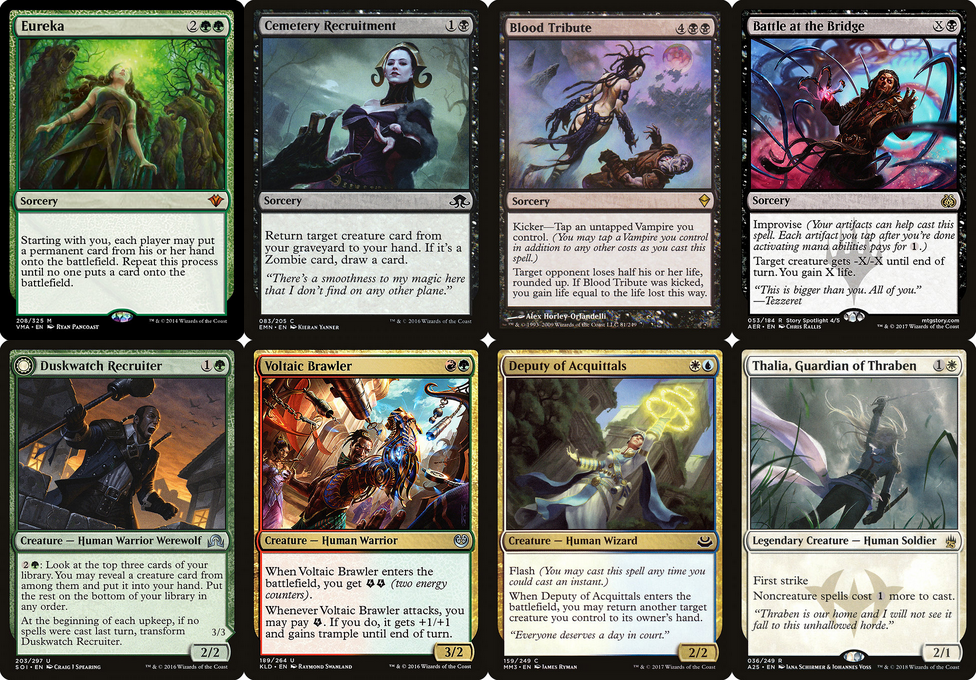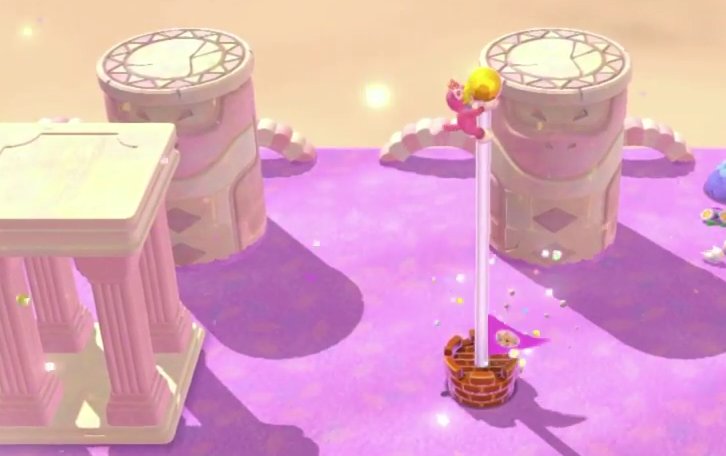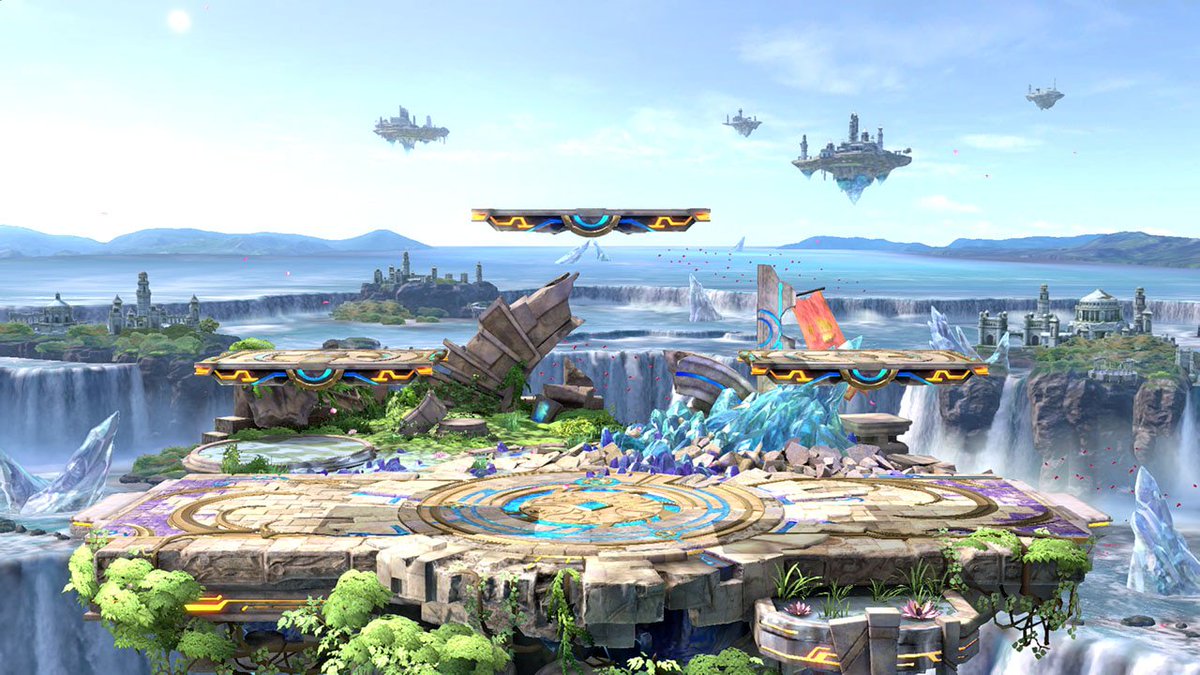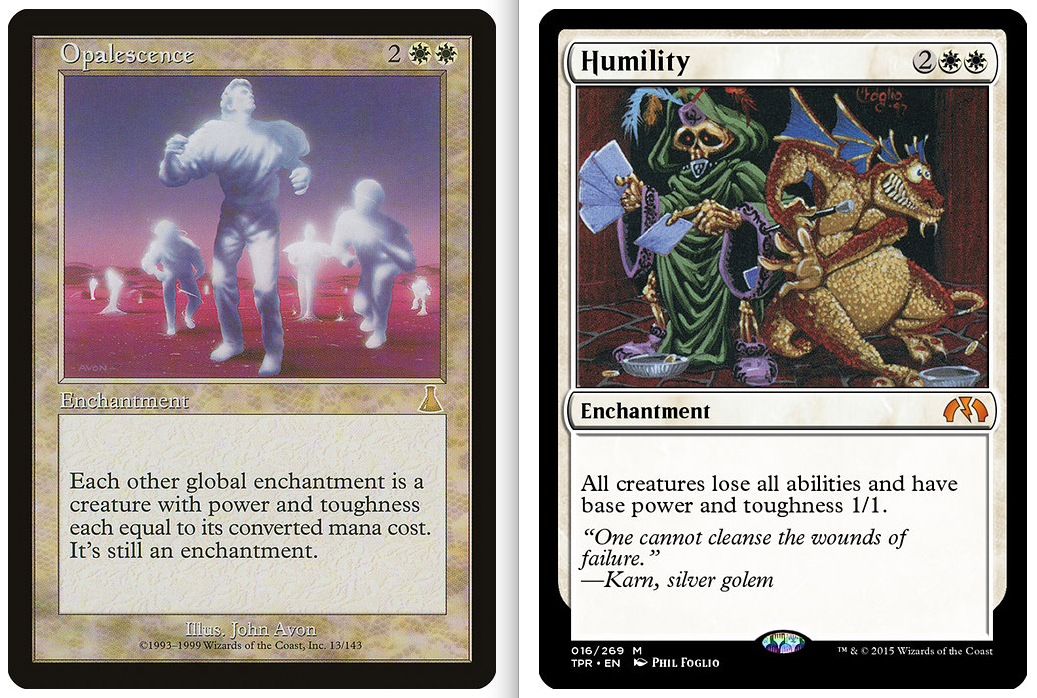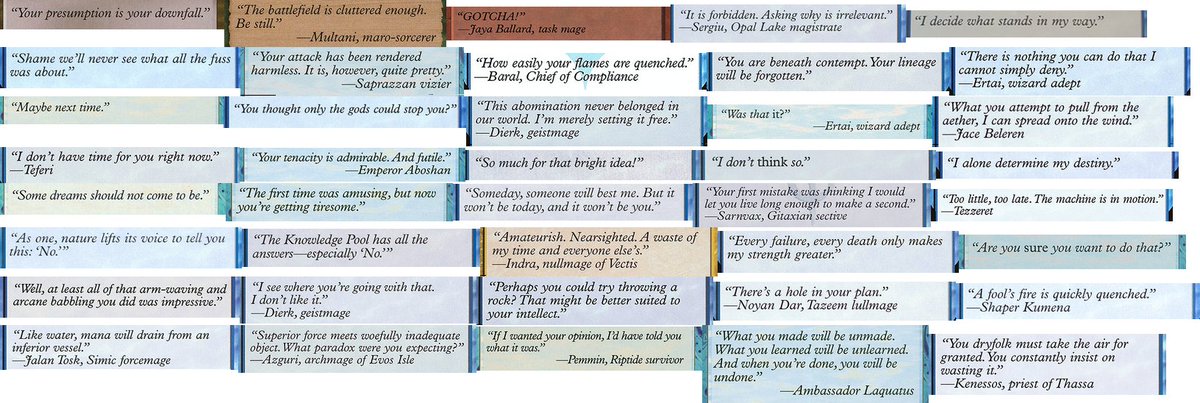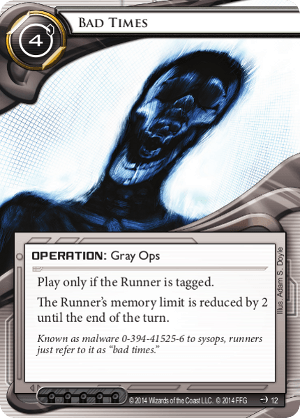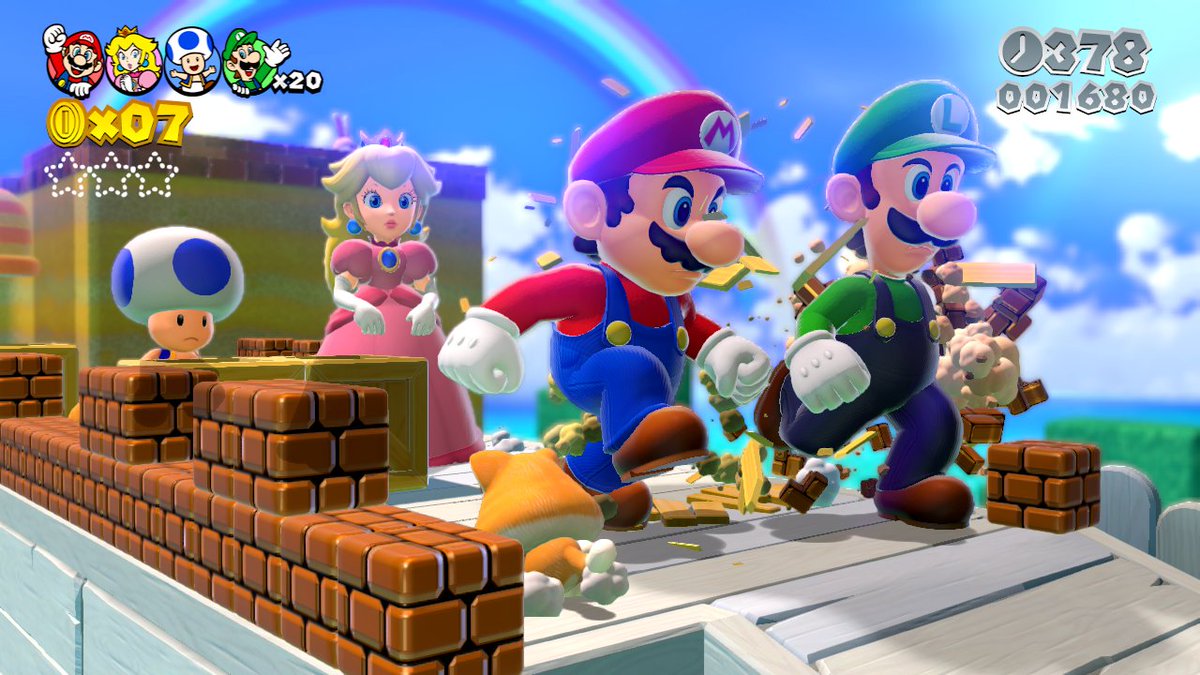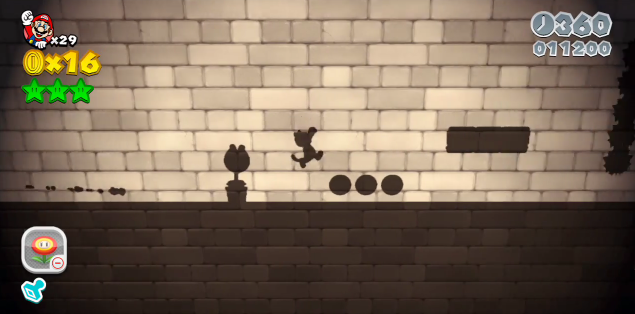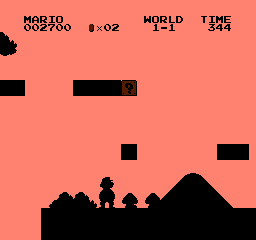People mentally compartmentalise dialogue trees in games as being separate from "the actual game" because they have inconsequential outcomes compared to the "action". I propose every dialogue fork should have 1-4 options that result in instant death regardless of all context.
If you spend too long planning a story it rots in your mind and you have to throw it out instead of writing it. Your mind is like a refrigerator.
This videogame isn't perfect and I hate that. I'm going full Hans Christian Andersen's Snow Queen on this. So long former friends, I'm off to Finland to sit motionless in a silent palace forever.
*tries to work but can't stop thinking about how Celeste is only three, possibly even just two writing passes away from being something I'd lose my mind over* Uuu… uwaaaa aaaaaaaa
Ah, time to remember the music from the seventh stage of Celeste.
*my mind immediately starts remembering this https://homestuck.bandcamp.com/track/skaian-skirmish*
Geez, what the heck
Hi. What's the absolute worst MTG card-art-based theme deck idea you can come up with. Right now I'm thinking "100% Dutch angles". I'll report back as soon as I find some basic lands.
A small part of me is chagrined that the original 90's banned MTG cards have quad-digit resale prices… I'm like, why should bad game design decisions become items of value
AS AN INCIDENTAL DATA POINT, I also committed myself to a 0 berry clear, based on a rumour it gives a different ending (it doesn't) (it's the same ending but the whole cast is disappointed in you) (which I think betrays the stated promise that berries are "just for fun" but w/e).
A lot of the lategame also felt padded… like, say, the boss fight in 6. Did it really need like twelve rooms when it's supposed to be a stunning reversal of power in favour of Madeline? Just pick the best five and move on, sheesh. 7, while fast, also should've been even faster.
Anyway… favourite world storytelling-wise was 3 (Resort), predicatable though it was. Least favourite was 5 (Temple), mainly because I wanted a bit more subtlety to it, or at least less unnecessary explanations.
This is really a compliment to how compelling the earlier storytelling was - it did feel like it was building up to a point much sharper than it was.
I really want to equate this game with Scott Pilgrim, another Canadian sensation, in terms of style and execution.
The sharpest barb of disappointment is probably that Madeline's reason for specifically climbing that mountain wasn't really there – because I feel most of the symbolism of this mountain, to both her, her depression and Shadowline, was just left on the table.
#IPlayed Celeste. I've run into bad luck because this game, while decent, has nonetheless only left me superhyperfocused on everything it could've done better. It's the steepest gradient in my taste curve.
I hate that "Art Nouveau is by elves, Art Deco is by dwarves" memory sentence because it's very trite and yet my constantly remembering how much I dislike it is only helping it fulfill its mnemonic purpose. Owned ._.
THANKS, BITBUCKET
AND I just realised these goddamn snake pillars are raised in worship of Hisstocrat, the boss of world 3. God damn it.
Not to say that SNES platformers like Kirby Super Star necessarily pale in comparison to a Kirby 64 (whose environment design, while decent, isn't quite in Super Star's league) but it's easy to see how much, say, Robobot's very good world design is also helped by its camera.
The other other reason the 3D Land duo is better than all four New SMB games is because even slightly varied camera angles do so much to establish the mood and meaning of a location and aid memorability. Even something as simple as a slight tilt conveying elevation is meaningful.
I feel like an equivalent Ultima ending can't really exist in a videogame as long as the software enforces every one of its rules. Even stepping out of the software, editing a save file or whatnot, still feels like you're bypassing or hornswoggling a machine.
The fact that it is a physical game, literally a book, means that its rules are only enforced by the player themself, which makes the act of cheating an act of resisting only yourself – which I feel makes it very different to videogame "cheats".
Ultima ending from the CYOA book Inside UFO 54-40 recasts "cheating" at a single-player game not as base subversion but as a "miracle", an act of wonder and beauty – of allowing, within a game's fixed possibility space, the inexplicable to happen.
floating islands minor eyesore but uniform blue crystal undersides suggesting source of flight is great economic worldbuilding coupled with blue crystal on main platform itself; sky otherwise unbroken and soothingly coloured.
OVERALL: 2/2, "THANK GOD (IT BEATS WII U BY A LOT)"
background worldbuilding STRONG; ocean-draining tiered waterfalls striking, as is ice pillars jutting from water in unnatural angles; vaguely Eastern-European buildings clustered on islands with foliage to offset grayness; flocks of magenta birds give AMAZING colour contrast;
ugly broken Gothic masonry is at MINIMUM; different-sized arches not too distracting; foliage and water could be bigger but both sorely absent from Wii U; tiny lotus pool a brilliant touch; lack of trees made up for by high horizon line and unobtrusive, wide scenery;
MY REVIEW THREAD OF SMASH BROS. 5'S "BATTLEFIELD" STAGE, WHICH I WILL SEE APPROX. 51,000 TIMES VIA ESPORTS STREAM DEPRESSION PROCRASTINATION:
Vast improvement over Wii U ver.; equal to 3DS ver.; bursts of purple and green complement the prior beige, blue and yellow a lot;
(Some might argue that we already have this kind of game, and it's called a Metroidvania - its intermittent stream of quality-of-life items selectively eliminating limitation after limitation as the game goes on.)
I imagine that an array of puzzles that take the same or similar obstacle elements, and show how they are trivialised or transformed in varying ways by different "power" elements, like how roguelikes' levels are transformed by their power items, would make a compelling game.
There isn't really much combinatorial hay to be made from Spelunky's jetpack - it's fairly obvious how it changes things - but the feeling of gradually realising how many deeply-ingrained limitations it lets you suddenly ignore is what makes it so striking.
I often think of roguelikes' "power items". These are rare items that drastically change the run, and cast a shadow over the next run when they're gone. Think of Spelunky's jetpack, or a strong Isaac item. There's often many of them, and each dominates the run in a different way.
That wouldn't even necessarily mean "wasting" deep puzzle elements on shallow introductory puzzles. I think what defines an introductory puzzle's solution is that it reveals *power* inherent in the puzzle's elements, and shallow things can be powerful.
Do I feel that entire games of just "simple" introductory puzzles should be made… even if the game is puzzle-driven? I think you could make a game where every puzzle is as impactful as an introductory puzzle, where every solution was revelatory.
I actually think the complexity of a puzzle negatively impacts its overall memorability, and that only the solution's narrative meaning or aesthetic meaning (such as its ironic simplicity) counteracts this relation.
Their hardest and latest puzzles, conversely, often require "painting the corners" of the game's mechanical possibility space – they Finish The Game, but the player usually isn't really emotionally invested in complex corner-cases, and often can scarcely remember them afterward.
Even puzzle-driven games' introductory puzzles are often more compelling than their hardest puzzles, because of how much they reveal in one flourish. The very first Braid puzzle that you solve by just rewinding, or the first time you use portals in Portal to cross a wide gap.
Adventure games also have "climax puzzles" at their ends, puzzles where you /know/ what the solution is the moment you see it, because the entire plot has been priming you for this moment. Far from being "trivial", the mere fact of their easiness is what makes them feel powerful.
The majority of adventure games' puzzles are just that – enclosures where you only have one or two interactive elements, only one combination of which makes sense, but the act of performing the solution creates the entire scene, reveals the plot as written.
Some thoughts about videogame puzzles:
Despite intuitions, a puzzle that's easily solvable on the first try (due to lack of combinatory possibilities) can be compelling if it reveals something meaningful about the game world, or the solution makes for a compelling scene.
Learning the history of MTG has proven to be a huge mistake for my productivity because it turns out it's a cross between the history of NetHack and the history of Javascript
The surprise for me is not just that they were revisited at all, but that they were even in Rondo Of Blood back in 1993 in the first place, given how modern they feel, how much they counter the standard stage-based action game intuitions of the era.
A lot of people probably found them disappointing, but I personally think they're brilliant, giving the end of the fight a much more dramatic climax than just the usual long-winded non-interactive death animation, WITHOUT ruining the drama by letting the player lose.
In the original, these had no real purpose except to A) add further characterisation and theatrics to the boss, B) engineer tense "close calls" for the player on first playthrough, and C) reduce the end-of-level life bonus. In Curse Of The Moon, the third one doesn't even exist.
Curse Of The Moon has a lot of very precise Castlevania callbacks but the one I was most surprised to see was the boss end-of-battle attacks from Rondo Of Blood that do a lot of damage but can't actually lower the player's HP to 0.
It's ALSO absolutely not an inferior path through the game. I think these sorts of alternative payoffs should be introduced using a puzzle or action level that CANNOT be solved, where it is the only canonical path, solely to emphasise this.
This isn't a "skip", or a politely offered assist. It's dynamic storytelling. It's compensating the player's time with seamless alternative content, redeeming lost momentum with a payoff.
If you still want to beat it… go back with the quicksave list or the chapter select!
Two Things Authentication is when you prove your identity by providing something you like to watch, and something you also like to watch, in a single piece of crossover fanart.
There are only 4 known kinds of non-linear game narratives:
Choose-your-own-adventure graph
Open-ended simulation
Pile of found-footage documents with no obvious ending
Futuristic storytelling AI improvises the entire story live, to exactly your tastes
There are only 4 known kinds of linear game narratives:
Scripted plot
Sequentially unlockable endings
Game where the act of just trying to play is the story
Arcade game with no win condition as artistic statement (Missile Command, Tetris)
Controversial game opinion: if a player fails a puzzle in a story-driven game more than 5 times, the game should roll a fast montage of the player-character trying increasingly implausible solutions, before flashing a "3 hours later" title card and putting them on the other side.
The real apogee of twenty-first century branching storytelling is not non-linear videogames but fanfic, affixed like skewers into the foam column of franchise canon, turning a straight shoot into a thicket of competing possibility
"Good news folks, I'm saving Netrunner by making my own unlicensed clone which is exactly the same but you can prevent meat damage by letting the Corp player kick you in the nuts for each point. I call it Nutruiner." – thing my brain must ABSOLUTELY NEVER EVER be allowed to tweet
The purpose of Forest cards is to tap for 1 green mana… *I pause and take a sip of water* …in specific situations, but MAINLY to be montaged on a web page so you can browse them and let your mind interpret them as a soothing, experimental wordless comic. https://scryfall.com/search?q=!%22forest%22&order=released&dir=desc&as=grid&unique=art
To be clear, "don't worry about it" doesn't mean to not worry about a non-plot that has Mario run around for 3 hours with no other interpersonal interactions, but to not worry that because the aforementioned story can depict dozens of block types, better stories cannot.
Of course, something like a 50-level puzzle game fixates on these mechanics for far longer than a heist story ever would… well, any story that's dozens of chapters long surely must have a narrative structure that gives those chapters meaning, or else why would they exist?
This question is asking "how do I make a human story from a game about platforms, timer switches and powerups" but I think about how, say, a heist story can be human despite being about the mechanics of safes, laser sensors, elevators, etc.
Back on the topic of games telling a human story within their gameplay: the big question is how the dry mechanisms of, say, an action-platformer or a level-based puzzler can have any humanity in its narratives at all. My current opinion on this is just "don't worry about it".
I think an untapped vein here is recognising that actually dropping a counterspell is also a moment of sheer vulnerability; they're said to often be far more valuable in the hand than out.
Is there any MTG flavour text genre less sufferable and more like bad 00's forum signatures than "counterspell quip by the counterer to the counteree"
Who called it Metroidvania and not Vlad Zebes *leans back and spends 10 minutes hoping people get it instead of resuming my work*
"Here's the emergency backup, sir, which you'll observe I took great pains to carefully organise." *holds aloft two hard drives labeled "zeros" and "ones"*
"Thank god I'm back home–" *sheds spacesuit, revealing extremely toned muscles and glowing skin* "–after being marooned for a week on a planet with strong gravity, and humidity that kept me constantly moisturised. I never wanna talk about it or its exact location ever again."
I hope you all understand the big takeaway from the roster and the name "Ultimate" is that Sakurai is absolutely not coming back for the next one,
which means we can FINALLY get a Kid Icarus Uprising sequel in at most the next seven years
Look. I know it's easy to get overworked about whether your favourites will make the Nintendo game roster. I get it. I still think it's reasonable for me to declare that if a fork chef AND a watering-can robot aren't both playable in Mario Tennis: Aces, I WILL hurl my
"For the first forty years of the 'Net, the only truly hacker-proof barrier was the humble airgap–" *footage of a tiny green glowing punk kid oozing slime-like out of a severed ethernet cable and landing shrieking into a cat bowl labeled "Mr. Nybbles"* "–but not for much longer."
This just reminded me of that playing-card game which is predicated on playing cards facedown as if they were other cards https://en.wikipedia.org/wiki/Cheat_%28game%29 I hope there's a CCG that makes constant bluffing a core mechanic to this extent.
I'm assuming there are CCGs out there where that isn't the case, where the rules state that you /could/ search your deck for an illegal card type, and your opponent can bet some resource to challenge you if they suspect ill-doing (and can punish you if correct).
Reading Netrunner and MTG rules reminds me that certain game actions need to let the opponent verify them to ensure you aren't cheating - for instance, "search your deck for a ___-type card" requires a "reveal it" afterward so the opponent can check the searched card's type.
"Leon don't do it."
Do what
"Don't make that tweet."
Really
"Don't do it. Do not do it."
OK
…
*proceeds to completely disobey that* I Can't Freaking Believe Sans From Undertale Is In Netrunner
#TIL (which means "today I learned" even though I learned this over a month ago) that dribbling wasn't actually codified in the original rules for basketball, but naturally emerged as an unintended exploit whereby you repeatedly "passed" the ball… to yourself? Incredible.
Knowledge is complaining that the New SMB games have two different Toads as playable characters; wisdom is complaining that it wouldn't matter anyway because they all have the same physics and you can't even willingly select Luigi in single-player mode.
What 3D World taught me is that if Nintendo finally applied the full Mario Sports Roster formula to a full-fleshed platformer – we're talking eight to twelve characters, with both Peach AND Bowser – they'd finally be representing the series in a unified, consistent fashion.
The thing about the Mario franchise is that the "Bowser kidnaps Peach" formula is so fundamental, so sacred, so intrinsic to its identity, that it's completely and utterly ignored by every sports spinoff.
"When Plester Whiteley invented Duckbuck in 2018, he didn't know that in less than 2 years it would replace all currencies, nor that the word "Duckbuck" would become synonymous with wealth beyond dreams… each syllable dripping with desire, each plosive an orgasm in miniature…"
10TB Server Log
Hasn't been cleaned since 2007.
Win quote: "2018-06-09 06:21:00 Unauthorised client… terminated."
Lose quote: "✨💫00-0✨-00 0💫:0✨:💫0 Did anyone log the IP of that truck?!"
Date quote: "Hacker… I've seen so many come and go… but only you made me ask… why?"
First day back in the office after time rewound and sent everyone two weeks into the past. No one's sure which version of themselves should've shown up. Half the temps who were let go one week from now are desperately trying to do better, and the other half are visibly asleep.
"Ah," *snaps off neon-green goggles* "Yup, seems your soul image has the "seven glowing keyholes through the heart" disease. No biggie, just gotta beat the Spirit World's Seven Holy Princes in sword duels…" *whispers* "andthendatethem"
At this point, setting games in an increasingly formless Mushroom Kingdom, much like the "rescue Peach" plot, only communicates how little the games care about whether the levels and worlds mean anything at all, whether anything in the game matters if it's all interchangeable.
One more thing: this game's worlds may lack a cohesive identity but I do really appreciate that the entire game is set in "the Sprixie Kingdom" with its own inhabitants who have their own overworld houses, instead of just the Mushroom Kingdom again for a sixth game in a row.
I'd probably be less hard on this if it was ever more than just the same animations every time, but it never is – not in the Galaxys, not in the New SMBs, not in these 3D games. Just hundreds and hundreds of squandered seconds.
Another disappointment I forgot: the notification bloat when you finish a level – a bane of the series since Galaxy, comparable to the battle transition bloat in Pokémon from gen 3 on – isn't improved here, with star and time tallies, map screen flags popping, and so on.
(I should mention as an extra point of dark humour that even after disabling both security protections in my browser, the article's embedded videos use Flash.)
I tried to read the Iwata Asks page for this game and it failed to AJAX any of the actual article text because A) all the JS files are blocked because their URLs are HTTP, and B) the main JS file contains hard references to a third-party tracker that my adblocker blocks.
The sheer amount of items and effects that can plausibly come out of, or even be made from, a ?-block in this game compared to basically any past installment means that it's finally living up to the promise of surprise and wonder that the ? mark always suggested.
Charging Chucks having their HP reduced from 3 to 2, so that it can now be represented by them losing their helmet, is the sort of mindful iteration on past designs that I like.
I'm not buying the videogame Celeste unless the ending turns out to be that you the player NEED to give up pride and glory and turn on Assist Mode in order to save Madeline.
"But Leon that's how the game is normally, hahahahaha" …Ya know what? I wanna be mad at you but I'm not.
*plays this stage* 3D World please just @ me next time http://youtu.be/wsoKoiSoBQc
I can understand, in that the more versatile tanooki theme let them make enemies with tail-whips and/or floating and/or transforming, while the cat power just offers pounces, scratches and wall-climbs, with the latter two requiring existing limbs… but it's still a regression.
Another thing I'm a little disappointed with is that the cat powerup theming isn't anywhere near as consistent as the tanooki theming was in 3D Land… Surprisingly few enemies have amusing cat variants – only goombas, bullet bills, the final boss, and maybe one or two others.
(Planeswalker cards are creature-ish cards that have "loyalty" as a flavourful kind of HP, and can only cast one of a selection of spells per turn that either gain or spend loyalty.)
Sans ①
Legendary Planeswalker - Sans (1)
+1: Whenever damage is done to Sans until your next turn, you may slide Sans out of the battlefield, then slide him back. If you do, prevent that damage.
0: Nothing happens.
-1-1-1-1-1-1-1-1: Your next beginning-of-combat step can't end.
I made the mistake of learning a little bit about MTG, and now the absolute worst case scenario has happened: I realised EXACTLY how a card for Sans from Undertale should go
This is really the big thing that holds this game back – its identity is mostly just "3D Land continued", just another set of 3D Land's "worlds" that were just spinning level icons in menus.
It's honestly a real shame, because the levels' environments would be quite compelling if they had even any mutually-provided context whatsoever. Even the New SMB games are better than this, and their levels are very boring visually.
I mean, think of world 7 in SMB3, or Forest of Illusion in SMW: every level in those contributed to their themes, both environmental (piranhas/forest) and mechanical (pipes/mazes). Here, there's desert levels in the castle world and beach levels in the ice world, etc.
I'll admit I'm rather disappointed at how this game continues the trend of aimless, ill-focused worlds – level themes and environments scattered arbitrarily through the game, possibly to adhere to a strict difficulty curve, instead of suggesting some sense of place.
Favourite enemy so far are those blank-staring rats that run against treadmills and automatically jump over obstacles that the player needs to as well – I'm headcanoning them as this kingdom's humbler, more canny counterpart to goombas.
Yeesh, the way this game fleshes out the Mystery Box timer rooms from 3D Land is incredible. The ones in 3D Land were forgettable puff; these ones are like supercharged DKC2 bonus levels (one of the few things this game does faster than those from the SNES era).
On Captain Toad: while ostensibly in the same role from Galaxy of comic-relief parallel-journey character, his presence then was too incidental and far-between (more a fault of Galaxy's ugly pacing) to give him much impact. I like how this game uses him in comparison.
Favourite moment thus far is in 6-1, where there's a part where Captain Toad is drifting in circles in a loop of clear pipe and if your character passes him they say hi, and it isn't tied to a star – miraculously, it's just a joke that stands by itself, a brief flash of humanity.
If the Pokémon demo ever turns out to be fake I REALLY hope it's by two well-off American men who immediately get a fawning magazine interview where they call it a "provocative ARG" and launch a Bear Stearns Bravo-esque art project that vanishes from the zeitgeist in six hours.
Even minor things like the soccer balls and baseballs that you can kick - both part of the cat theming, and also clever indication that these objects are kickable and throwable - provide a bit of extra whimsy. (I'm reminded of the work done by Sunshine's kickable durians.)
I appreciate how often this game offers varied objects to pick up and throw, and varied objects to wear – there's a world of life and meaning separating an ice level, and an ice level where you can grab a snowball or jump into an ice skate.
About the Cat Suit: in 3D Land the conflict between its slow-run small-jump platforming and the Tanooki Tail meant its signature ability (flight) was cut; this suit wisely replaces flight with wall-climbs, which allow similarly grand ascent but can't arbitrarily replace jumping.
Five levels in and we get a Bowser's Castle level filled with sparkling ocean water instead of lava. It's one of this and Odyssey's big breakaways from the legacy of SM64: asking "what if Mario games didn't /always/ look like constant blaring flat colours"
Three levels in and we get a level environment type unseen in any prior Mario platformer (circus). That the last time this happened was arguably Galaxy 1, almost a decade earlier, is another 3D World Fact that weighs heavily on me.
TIMELINE OF EVERY HUMAN'S RELATIONSHIP WITH MTG
– No knowledge of MTG
-
-
– Some knowledge of MTG
-
-
– Encountering that card depicting the big-teethed puking sky fish https://scryfall.com/card/bok/82
- <– (Your dear pal Leon is here!)
-
-
-
-
-
– Valve releases Artifact
The best part is that it takes the shell's original SMB1 utility - ploughing forward through enemies - and lets you choose the risk: getting hit by the shell vs falling in a pit in the shell. A bonus in environmental versatility for next to nothing.
One level in and already there's a great mechanic using existing Mario elements: grab a shell, then duck to ride inside the shell. It's like the New SMB powerup but without eating a powerup slot, and it's like SM64 shell-riding but the original shell mechanics are still there.
